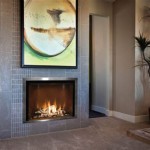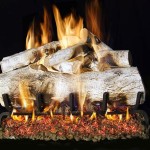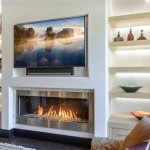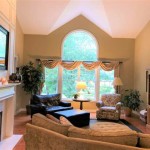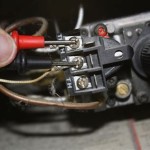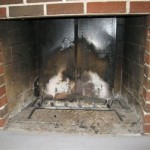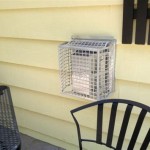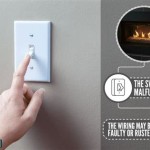Outdoor Gas Fireplace with TV Above: A Guide to Design and Functionality
The integration of an outdoor gas fireplace with a television mounted above has become an increasingly popular trend in outdoor living spaces. This combination offers an appealing blend of warmth, ambiance, and entertainment, effectively transforming a patio or deck into a year-round extension of the home. However, successfully implementing this design requires careful planning and consideration of several key factors, including safety, weatherproofing, installation standards, and viewing optimization.
The primary appeal of an outdoor gas fireplace stems from its ease of use and consistent heat output. Unlike wood-burning fireplaces, gas models require no tending to fuel, produce minimal ash, and can be easily ignited and extinguished with a simple switch or remote control. The addition of a television above the fireplace further enhances the outdoor experience, allowing homeowners to enjoy movies, sports, or other programming while relaxing in the comfort of their backyard. This setup is particularly attractive in regions with extended seasons of mild weather, or for those who frequently entertain outdoors.
Despite the benefits, the design and construction of an outdoor gas fireplace with a television above present unique challenges. The proximity of the television to the heat source necessitates careful attention to heat management and component selection. Furthermore, outdoor environments expose electronic equipment to the elements, requiring robust weatherproofing and protection against moisture, dust, and extreme temperatures. A well-executed design will address these challenges while creating a visually appealing and functional outdoor entertainment space.
Key Considerations for Design and Installation
Successful integration of a television above an outdoor gas fireplace hinges on meticulous planning and adherence to safety and installation guidelines. The following considerations are crucial for achieving optimal performance and longevity of both the fireplace and the television:
Heat Management: The most critical aspect of the design is managing the heat produced by the gas fireplace to prevent damage to the television. Heat rises, and prolonged exposure to high temperatures can significantly reduce the lifespan of electronic components, leading to screen discoloration, component failure, and overall performance degradation. Therefore, several strategies should be employed to mitigate heat exposure.
One common approach is to incorporate a substantial mantel or heat shield above the fireplace. This barrier deflects rising heat away from the television, creating a protected zone. The size and material of the mantel are crucial factors; it should be wide and deep enough to effectively redirect the heat flow. Materials like concrete, stone, or metal provide excellent heat resistance and durability. Another strategy involves increasing the vertical distance between the top of the fireplace and the bottom of the television. A greater separation distance allows for more heat dissipation before it reaches the television. Consulting with a qualified fireplace installer is vital for determining the appropriate dimensions and materials based on the specific heat output of the chosen fireplace model.
For additional protection, consider using a ventilation system concealed within the fireplace surround. This system can actively extract hot air away from the television, further reducing the risk of heat damage. Furthermore, the use of temperature sensors and automatic shut-off mechanisms can provide an added layer of safety, preventing the fireplace from operating if the temperature near the television exceeds a pre-determined threshold. Regularly monitoring the temperature near the television during fireplace operation is a prudent practice.
Weatherproofing: Outdoor environments pose a significant threat to electronic equipment. Moisture, humidity, dust, insects, and extreme temperatures can all contribute to component failure and reduced performance. Therefore, weatherproofing is essential for ensuring the longevity and reliability of the television.
The ideal solution is to use a television specifically designed for outdoor use. These televisions are typically housed in rugged, weatherproof enclosures that protect against rain, snow, dust, and insects. They often feature enhanced brightness and anti-glare screens to improve visibility in direct sunlight. While outdoor televisions tend to be more expensive than standard indoor models, they offer superior protection and performance in outdoor environments.
If using a standard indoor television, it is crucial to provide adequate weather protection. This can be achieved by installing the television inside a weatherproof enclosure or cabinet. These enclosures are typically made of durable materials like aluminum or stainless steel and feature sealed doors and vents to prevent moisture intrusion. Internal heating and cooling systems may be included to regulate temperature and prevent condensation. When selecting an enclosure, ensure it is properly sized to accommodate the television and any associated cabling. Additionally, consider incorporating drainage holes to allow any accumulated moisture to escape.
All electrical connections and cabling must be properly sealed and protected from the elements. Use weatherproof connectors and conduits to prevent moisture from entering the electrical system. Consider burying cables underground or running them through protective sleeves to shield them from direct exposure. Regularly inspect the enclosure and cabling for any signs of damage or wear and tear.
Installation and Structural Support: The installation of both the gas fireplace and the television requires careful attention to structural support and adherence to local building codes. The combined weight of the fireplace, mantel, television, and enclosure can be significant, so it is essential to ensure that the supporting structure is adequately reinforced.
Consult with a qualified contractor or structural engineer to assess the load-bearing capacity of the existing structure and determine whether any modifications are necessary. The fireplace should be installed according to the manufacturer's instructions and local gas codes. A licensed gas fitter should be hired to connect the fireplace to the gas supply line. Ensure proper ventilation and clearance around the fireplace to prevent fire hazards.
The television should be securely mounted to the wall using a sturdy mounting bracket. Choose a bracket that is designed for outdoor use and has a weight capacity that exceeds the weight of the television and enclosure. Ensure that the bracket is properly anchored to the wall studs or a reinforced backing. Use appropriate fasteners and hardware to ensure a secure and stable installation.
Pay close attention to the placement of electrical outlets and cabling. Ensure that all electrical connections are properly grounded and protected from the elements. Consider installing a surge protector to protect the television from power surges. Keep all cabling neat and organized to prevent tripping hazards and maintain a clean aesthetic.
Optimizing Viewing Experience
Beyond the technical aspects of installation, optimizing the viewing experience is paramount for enjoying the outdoor television. Factors such as screen glare, viewing angle, and sound quality should be carefully considered to achieve optimal viewing conditions.
Screen Glare Reduction: Outdoor environments often present challenges due to direct sunlight and ambient light sources. Screen glare can significantly impair visibility, making it difficult to see the image on the television. Therefore, it is crucial to minimize glare as much as possible.
As mentioned previously, outdoor televisions typically feature anti-glare screens designed to reduce reflections. When selecting an outdoor television, look for models with a high brightness rating and a matte finish. These features will help to improve visibility in bright sunlight. If using a standard indoor television, consider using an anti-glare screen protector to reduce reflections.
The orientation of the television is also important. Position the television so that it is not directly facing the sun or other bright light sources. Consider installing an awning or shade structure to provide additional protection from direct sunlight. Landscape features, such as trees or shrubs, can also be strategically placed to block unwanted light.
Adjust the television's brightness and contrast settings to optimize the image for outdoor viewing. Experiment with different settings to find the best balance between brightness, contrast, and color saturation.
Viewing Angle: The viewing angle refers to the range of angles from which the television screen can be viewed without significant distortion or color shift. A wide viewing angle ensures that everyone in the viewing area can see the image clearly.
When selecting a television, look for models with a wide viewing angle. LED and OLED televisions typically offer wider viewing angles than older LCD models. Consider the layout of the viewing area and choose a television with a viewing angle that is appropriate for the size and shape of the space. Position the television at a height that is comfortable for viewing from the seating area. Avoid placing the television too high or too low, as this can strain the neck and eyes.
Sound Quality: Outdoor environments can be noisy, making it difficult to hear the sound from the television. Ambient noise from traffic, wind, and other sources can interfere with the audio, reducing the viewing experience. Therefore, it's important to consider sound quality when setting up your outdoor entertainment area.
Outdoor televisions often have built-in speakers that are designed to project sound effectively in outdoor environments. However, for optimal sound quality, consider using external speakers. Outdoor speakers are designed to withstand the elements and provide clear, powerful sound. Choose speakers that are appropriate for the size of the viewing area.
Position the speakers so that they are directed towards the seating area. Consider using a soundbar or surround sound system to enhance the audio experience. A subwoofer can add depth and impact to the sound, particularly for movies and music. Control the volume of the television and speakers to avoid disturbing neighbors. Be mindful of noise levels, especially during late-night viewing sessions.
Materials and Aesthetics
Selecting appropriate materials for the fireplace surround and incorporating them into the overall aesthetic design is crucial. The materials should be durable, weather-resistant, and visually appealing, complementing the surrounding landscape and architecture.
Fireplace Surround Materials: Common materials for the fireplace surround include natural stone, brick, concrete, and stucco. Natural stone offers a timeless and elegant look, providing excellent heat resistance and durability. Brick provides a classic and traditional feel, while concrete offers a modern and minimalist aesthetic. Stucco is a versatile option that can be customized with various textures and colors.
Consider the overall style of the outdoor space when selecting materials. Choose materials that complement the existing patio furniture, landscaping, and architectural elements. Pay attention to the color and texture of the materials to create a cohesive and harmonious design.
Design Considerations: The design of the fireplace surround should be both functional and aesthetically pleasing. Consider incorporating features such as built-in seating, storage compartments, or decorative elements. The size and shape of the fireplace should be proportional to the surrounding space.
The placement of the television should be integrated seamlessly into the fireplace surround. Conceal cabling and electrical connections to maintain a clean and uncluttered look. Consider using lighting to enhance the ambiance of the outdoor space. Landscape lighting can highlight architectural features and create a warm and inviting atmosphere.
The goal is to create an outdoor living space that is both functional and enjoyable. A well-designed gas fireplace with a television above can transform a patio or deck into a year-round entertainment area, providing warmth, ambiance, and entertainment for family and friends. Careful planning, attention to detail, and adherence to safety guidelines are essential for achieving a successful and long-lasting installation.

Double Sided Fireplace With Wall Mounted Television In The Patio Backyard Outdoor

Outdoor Lifestyles Lanai Gas Fireplace Fireside Hearth Home

Outdoor Fireplace Tv Niche Design Ideas
Enhance Your Outdoor Space With A Gas Fireplace Heat Glo

Inspiration Gallery Outdoor Gas Fireplace Patio Linear

Contemporary Modern Fireplace Designs With Tv Above Mantel

Outdoor Gas Fireplace With Television By Fine S Traditional Patio Other Hearth Houzz Ie

3 Tips For Installing A Tv Over Your Fireplace

Outdoor Fireplace With Tv Mount Living Space Kitchen Decor

36 Outdoor Gas Fireplace Electronic Ignition Fine S
Related Posts

